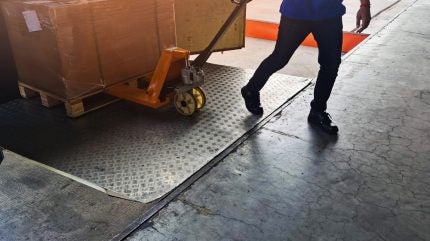
Heavy machinery and industrial components present unique challenges when it comes to packaging.
These items are often large, bulky, and extremely valuable, requiring robust protection during transportation and storage. Ensuring the safety and integrity of heavy equipment depends heavily on selecting the right industrial packaging solutions, tailored to withstand harsh handling and environmental conditions.
This article explores key packaging methods designed specifically for heavy machinery, highlighting the materials and strategies that help reduce damage risks while optimising logistics efficiency.
Understanding the demands of heavy machinery packaging
Heavy machinery, such as construction equipment, agricultural machines, and industrial components, can weigh several tonnes and feature complex shapes and delicate parts.
Unlike consumer goods, packaging for these products must account for significant mechanical stresses during loading, transit, and unloading. The risk of physical damage is high, including dents, scratches, corrosion, or even structural failure if poorly packaged.
Packaging solutions for heavy machinery need to provide a secure barrier against impacts, vibrations, moisture, and dust.
Moreover, the packaging should facilitate ease of handling with forklifts or cranes, given the size and weight of the cargo. This means incorporating reinforced pallets, protective crating, and shock-absorbing materials while adhering to shipping regulations and standards.
Industrial packaging for heavy equipment often involves customisation, as standard packaging rarely fits such oversized or oddly shaped items.
A thorough assessment of the machine’s dimensions, weight distribution, and fragility is crucial to designing an effective packaging strategy that minimises the risk of damage and simplifies transport logistics.
Key materials and methods for heavy machinery packaging
Wooden crates and pallets remain among the most popular packaging materials for heavy machinery. High-quality timber offers excellent strength and durability, supporting the considerable weight of industrial equipment.
Crates can be custom-built to the precise dimensions of the machinery, providing a rigid enclosure that prevents movement and shields from external impacts. Wood’s versatility also allows for easy modifications, such as incorporating lifting points or ventilation.
Steel and metal framing is another option, particularly for extremely heavy or valuable components. Metal cages or frames provide superior resistance to crushing and can be designed to integrate with handling equipment.
However, metal packaging tends to be more expensive and heavier, so it is typically reserved for specialised cases where maximum protection is paramount.
Protective cushioning materials play a vital role in heavy machinery packaging, especially to safeguard sensitive parts such as hydraulic systems, electronics, or precision instruments. Foam inserts, rubber mats, and shock-absorbing pads help reduce vibration and absorb impacts during transit.
Moisture barriers and corrosion inhibitors are often used alongside these materials to prevent rust and degradation over time, which is essential when shipping equipment overseas or storing it for long periods.
For very large items, stretch wrapping and shrink wrapping with industrial-grade films provide an additional protective layer. These films protect against dust, moisture, and minor abrasions while keeping loose components securely bundled.
Advanced stretch wraps can be UV resistant, ensuring protection from sunlight exposure during extended outdoor storage.
Innovations shaping the future of industrial packaging
Recent advances in industrial packaging for heavy machinery focus on enhancing sustainability, efficiency, and smart technology integration.
Eco-friendly materials, such as recycled plastics and biodegradable cushioning, are increasingly being adopted to reduce environmental impact without compromising durability.
Modular packaging systems are gaining popularity, allowing components to be packaged separately but securely, facilitating easier handling and reducing waste. These modular designs also enable better space optimisation in shipping containers or storage facilities.
Smart packaging solutions are beginning to influence the heavy machinery sector as well. Embedded sensors and IoT-enabled tags can monitor conditions such as humidity, temperature, and shock levels in real-time, providing valuable data to logistics managers.
This data helps anticipate potential damage risks and improve handling practices.
Automation in packaging processes is also advancing, with robotic systems capable of assembling custom crates or applying protective films precisely. These technologies reduce human error and improve packaging consistency, ensuring heavy machinery is always well-protected.
Ultimately, heavy machinery requires specialised packaging that balances protection, handling convenience, and cost-effectiveness. From sturdy wooden crates to innovative smart packaging, the solutions available today address the complex challenges posed by oversized and sensitive industrial equipment.
Selecting the right packaging materials and methods not only safeguards valuable assets but also supports efficient supply chain operations.
As technology evolves, packaging for heavy machinery will continue to improve, combining durability with sustainability and intelligence to meet the demands of modern industry.







